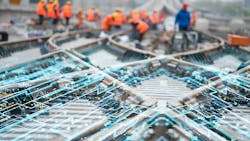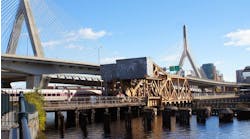Best Practices: How Change Can Redefine Rail Transit Asset Management
EXTON, PA - In addition to the challenges of shorter deadlines, smaller budgets and skills shortages, rail agencies need to overcome problems associated with aging infrastructure, climate change, and more recently, the impact of COVID-19.
To meet these challenges and ensure their networks are safe and reliable, transit agencies are driving their decisions based on the data they collect, create and manage. If data isn’t already their most valuable asset, it will be very soon.
The rail industry is changing
We cannot ignore the negative effect COVID-19 has had on all our lives, but we must also recognize that it has created new opportunities and can be a driver for change.
Technology can help to improve business outcomes across the asset lifecycle, and the case for using proven applications to increase productivity, quality and safety only becomes stronger as the world emerges from the pandemic into a “new normal.”
These improvements, driven by data, will be realized through smarter decision-making that helps optimize design, leverage different materials or methods of construction and target the right work, in the right place, at the right time, during operations and maintenance.
Redefining best practices
Recently, the American Society of Civil Engineers published its 2021 infrastructure report. Rail and transit scored grades B and D respectively, and the lack of federal support is a main reason for the current combined state of good repair backlog of US$221 billion.
It is clear that something needs to change. Perhaps lessons learned in other industries can help redefine best practices in rail transit as agencies strive to maintain networks in a state of good repair. Take the work of Collins Engineers, which is redefining the inspection process needed for maintenance, rehabilitation and replacement of existing bridges.
As with rail, the starting point for any bridge maintenance project is a detailed understanding of existing asset conditions. Traditional collection of this information is labor intensive, often requires expensive equipment and can be dangerous work for those involved.
However, by going digital and using Microsoft’s HoloLens 2 and software from Bentley Systems to create a digital twin, Collins Engineers is helping departments of transportation (DOTs) to perform virtual bridge inspections.
This game-changing approach enables Collins Engineers to bring an exact replica of a bridge into the office and means DOT inspectors can conduct up to 90 percent of the inspection without leaving their desk. This redefined practice reduces the time in the field, making the overall inspection faster, more efficient, safer and less expensive.
Reimagine the future
Since the construction of the first railroads, the professionals in the industry have focused their efforts on improving rail and transit and making it the safest, fastest and smartest means of moving people and goods.
In this ever-changing, constantly connected and highly complex industry, going digital has the potential to rewrite the rulebook. And as remote inspections allowed Collins Engineers to revolutionize bridge work, going digital provides agencies and their supply chains the opportunity to reimagine the future of rail and transit for a better tomorrow.
-----------
Narinder Manku, Solution Marketing Manager for Rail Asset Performance, Bentley Systems




